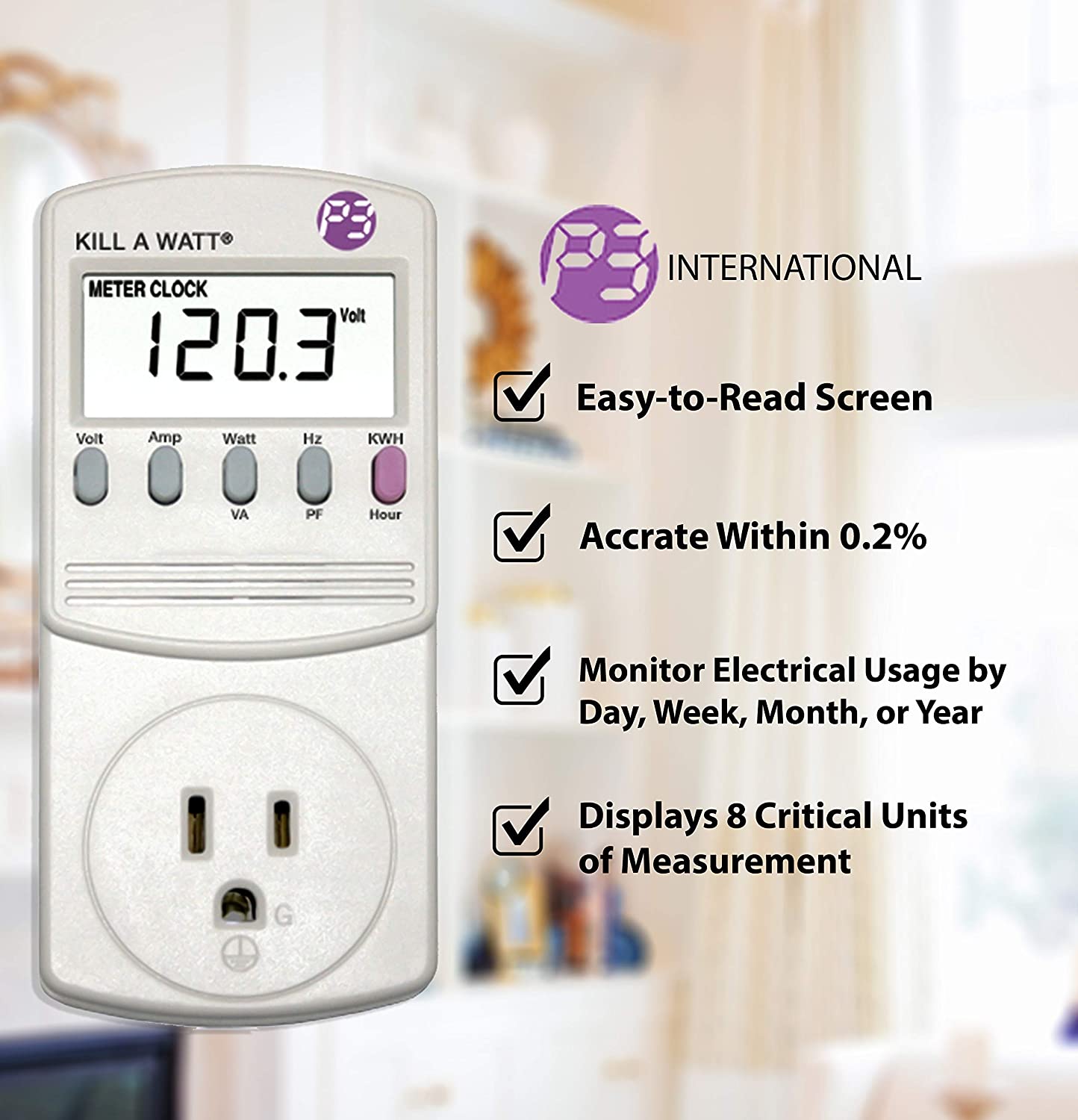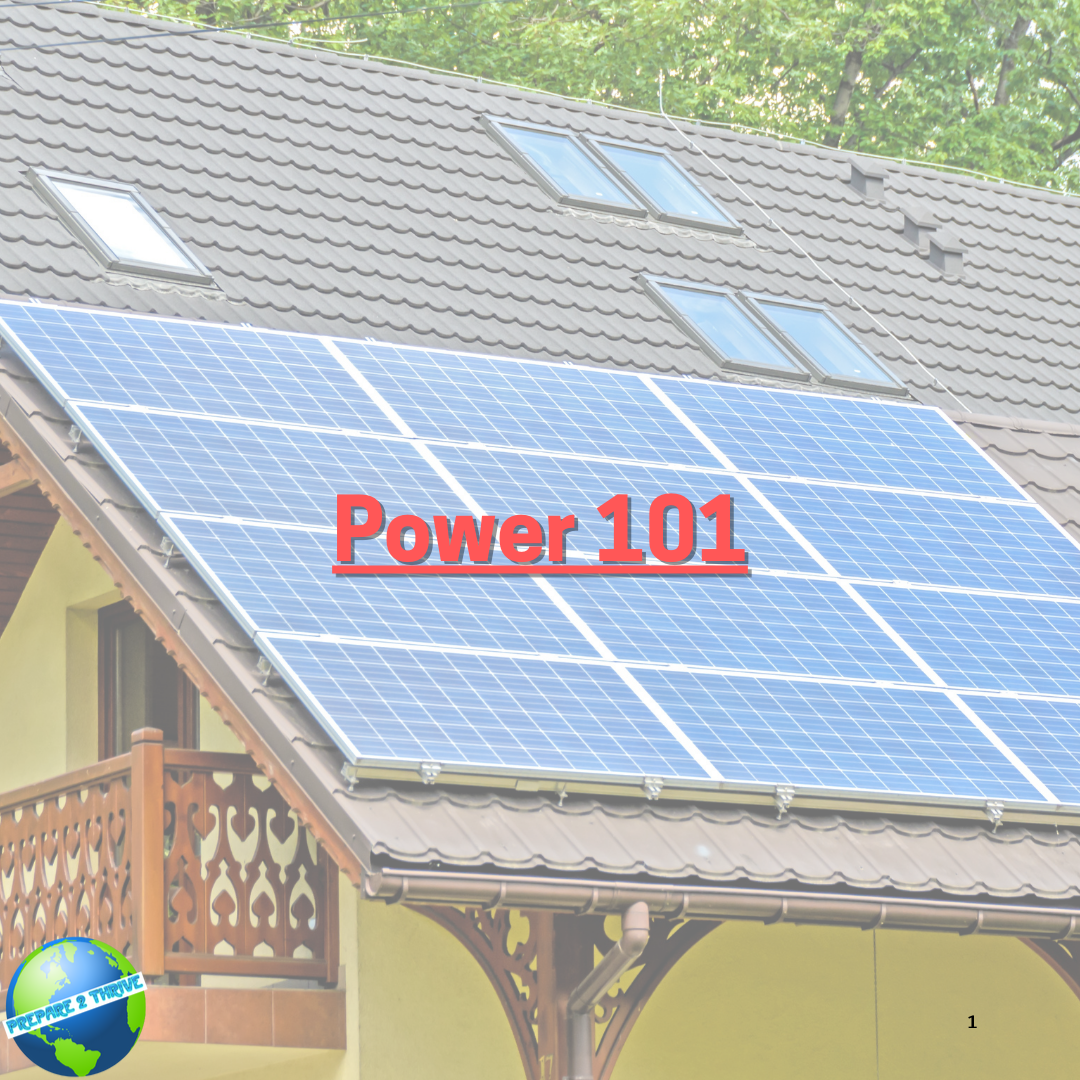A great many people want to produce their own power, but have no idea where to start.
Before you can look at the sources for your power, you need to know how much you will need. Everybody is different, and every house is different. A selection of different appliances can make a large difference in your requirements. Even having identical appliances but in a different region can make a difference.
Go to the Google Sheets spreadsheet and make a copy for yourself.
And important note about electrical measurements (if you live in a metric country, you already know this). The prefix "kilo", shortened as "K" means thousand. So 3.5K is the same as 3500. Therefore, two kilo-watts (2 Kw) is the same as saying 2000 watts.
STEP 1

So the first step is to find out how much power you will need.
In the "olden days" of before 2000, this was accomplished by checking each appliance's usage certificate, and recording the data found there. While you can still do this, it only tells you the maximum power required. A kettle may require 1500 watts (1.5 Kw), but it likely only runs for 5 minutes a day. That means the total usage is 1/8th KwH per day. So just reading the labels won't tell you how much it uses each day.
The easiest solution is to purchase a Kill-A-Watt device, or several of them. They are about $30 and are available at Amazon and many large hardware stores.
Plug it into the wall, and plug your device into it. Record the date and time. Let it run for at least 1 day. Preferably more as it will be more accurate.
At the end of your test period record the date and time, and record the "Total KwH". Add these figures to your spreadsheet.
STEP 2
The spreadsheet will add up all the power requirements and will tell you the required watt hours for the battery bank.
Next, select the type of batteries you will get. Lead-acid batteries (like car batteries) can only use 50% of their total power or else you will damage them. Lithium batteries can use 80% or more.
STEP 3
Once you have your battery needs, you'll want to size your solar array so that you can charge your battery bank from minimum to full in an afternoon.
And then you need the charger to handle the output from the panels.
If you are looking for the size of a generator, you can use the same spreadsheet. The pink field (cell L10) shows the wattage required to run your devices by generator. This is also needed for the output of your inverter.
Full spreadsheet explanations
Column A: The name and description of your device. "Freezer in garage", or "Kitchen Fridge", whatever you need to remember which device you are recording.
Column B: Priority Level. Not everything in your house has the same priority. If the power goes out during the summer, you must be able to keep fridges and freezers running, as well as medical devices, pumps, etc. Those would be priority 1 (highest) items. These then work through the checkboxes in cells K7 to K9.
Column C: The date and time that you started recording with your Kill-a-watt. You can enter the time as "2:00 PM" or as "14:00", the spreadsheet will convert it.
Column D: The date and time that you ended the recording for this device.
Column E: The max rated watts, found on the power label. Usually placed where the power cord enters the item.
Column F: The total KwH used as stated by the Kill-a-watt (press the purple button).
Column G & H: These are calculations that are done for you. The first calculates the amount of time your device was plugged in. The second calculates the kilo-watt hours (KwH) of electricity used each day.
Cell M3, Battery Voltage: This is filled in as 12 since that is the most popular battery voltage. But they also come in 6, 24, and 48 volts. If your battery bank is not 12 volts, change this number.
Cell M4, Days of Autonomy: Select the number of days that you want to be able to run when there's no sun. Typically 3 days is a minimum. If you go longer without sun, you will have to start your generator to charge your batteries.
Cells K7 - K9: These check boxes look to column B and add or remove devices from the calculations.
Cell L10: This cell is for the size of your inverter, as well as for generator users. This is the required output if all your devices are on at the same time. It's not usual that they would be all on, but it may happen.
Row 5, Cells N - R: Depth of Discharge is the safe amount of a battery you can use without damaging the battery.
Rows 7 - 9, Cells N - R: Looking at the amount of power you need, and the type of battery, this is the total amp-hours for each type of battery.
Row 10, Cells N - R: The total Amp-Hours of battery required for your devices, depending upon type of battery bank.Row 11, Cells N - R: Charging efficiency. For each watt of electricity put into the battery, how much will you get back out.
Row 12, Cells N - R: Based upon the charging efficiency, how many KwHs are needed to charge the battery bank.
Row 15, Cells N - R: Look up local availability of batteries, and enter their price here.
Row 16, Cells N - R: This calculates the number of batteries required to power your devices.
Row 17, Cells N - R: This calculates the cost of your battery bank.
Cell M19: Daily Incident Shortwave Solar Energy... say what??? The simple explanation is, this is the average amount of sun you get each day. Go to the WeatherSpark.com website and look up your location. Near the bottom of the page is "Solar Energy". Take the lowest figure (probably December if you live in the Northern Hemisphere).
If you want to cheat, and only have the solar power for most of the year, and during the winter supplement with a generator, then take a higher month. Just know that for the months with a lower number you may not last the full three days without sun unless you start your generator up to charge your batteries.
If you want to cheat, and only have the solar power for most of the year, and during the winter supplement with a generator, then take a higher month. Just know that for the months with a lower number you may not last the full three days without sun unless you start your generator up to charge your batteries.
Cell M20: Look up a local supply of solar panels and enter the wattage rating for the panel.
Cell M21: Look up a local supply of solar panels and enter the price for the panel.
Row 17, Cells N - R: This calculates the amount of panel watts required to charge your battery bank from empty to full, in one day. Note that this looks at the usable battery level. So with Heavy Duty Lead-Acid batteries "empty" is not zero, it's at 75% charge, because that is the only usable portion. (if that's too complicated, ignore this note and trust the calculations)
Row 18, Cells N - R: This calculates the number of panels required based upon the size of panels you entered in cell M20.
Row 19, Cells N - R: This calculates the cost of all the panels.
Row 26, Cells N - R: This is the total cost of batteries and panels, the day you purchase them. Batteries wear out, and the cost on day one, and the cost over 10 years is vastly different.
Row 30, Cells N - R: This calculates the 10 year cost of the batteries and panels. Suddenly, those cheap batteries are a lot more expensive when you have to keep replacing them.



